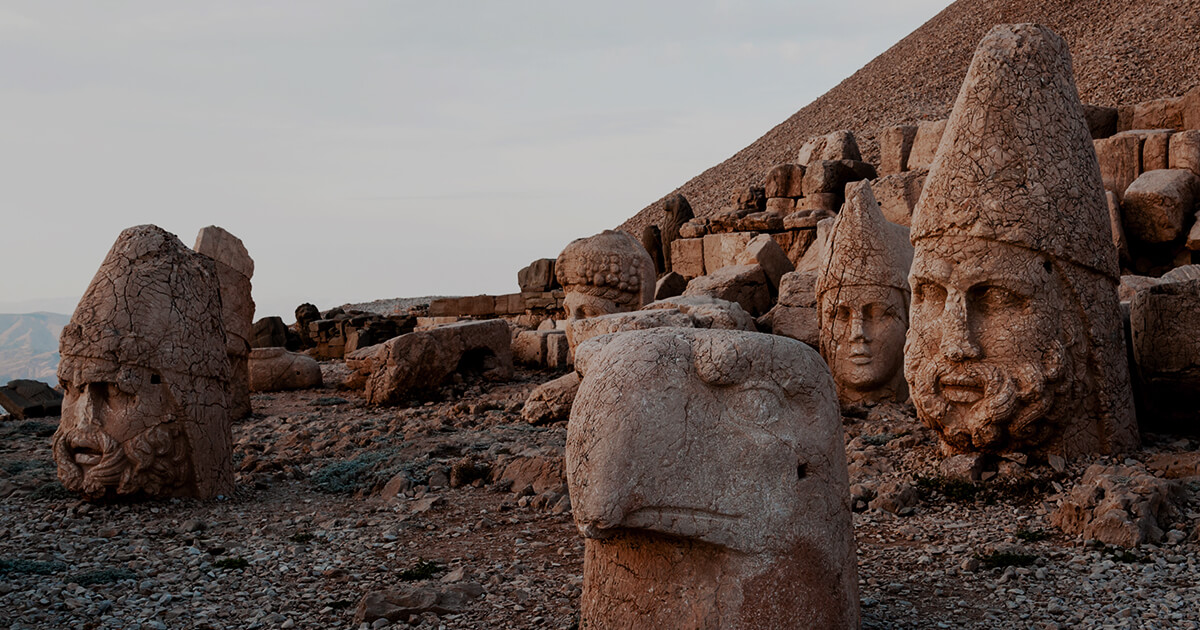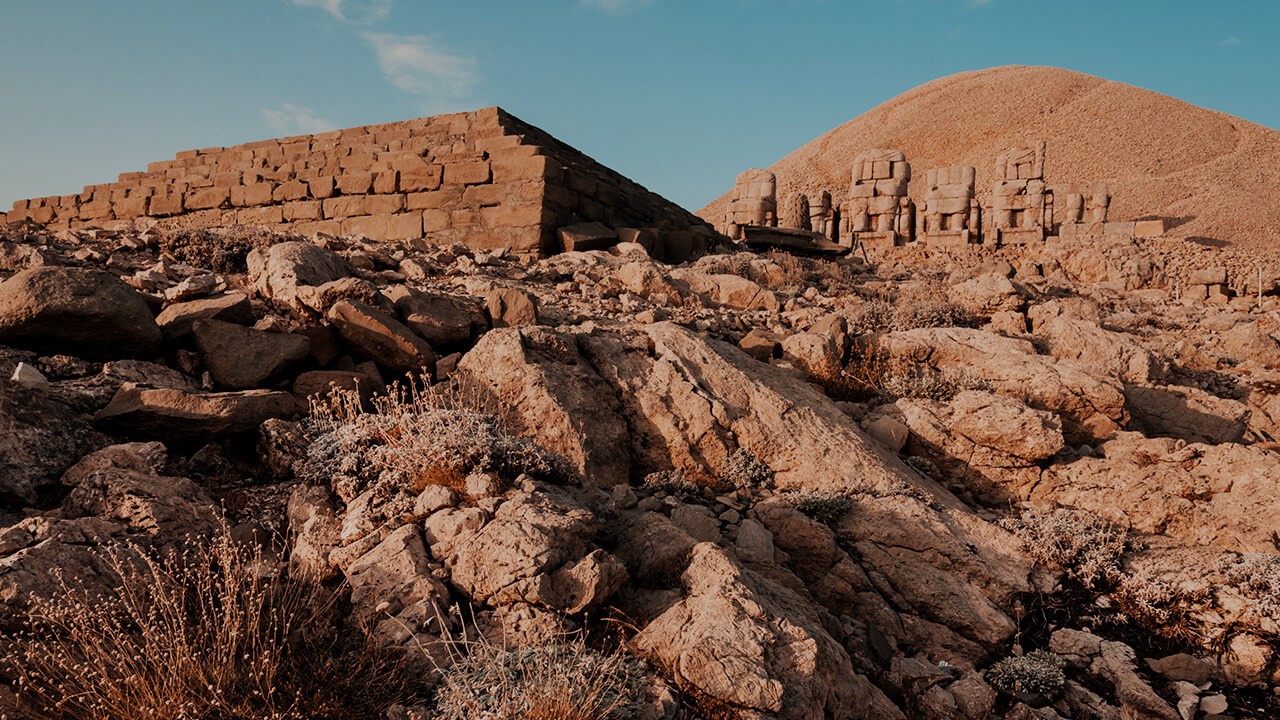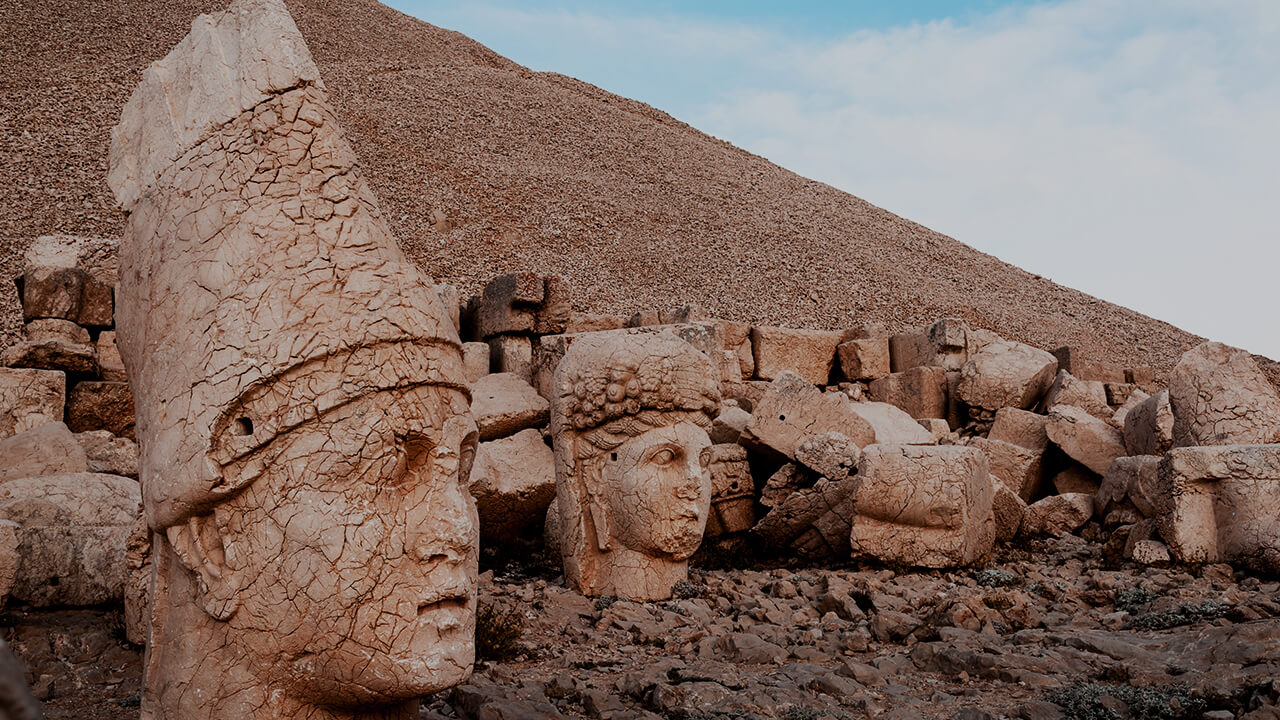
4.08.2023
5 Dakika

Thanks to its strategic location and valuable natural resources, Türkiye was home to many civilizations. Türkiye, where the heritage of these civilizations has produced an amazing historical and cultural richness, is also home to some of the world's most magnificent examples of the common heritage of humankind. We will explore these monumental artifacts, which are also included in the World Heritage List (UNESCO), together in the blogs of Turkish Museums.
In Nemrut, one of the highest peaks of the Eastern Taurus Mountains in southeastern Türkiye, are the ruins of the Kingdom of Commagene, which ruled the region between 163 BC and AD 72, and which are among the most magnificent monumental objects in the world. These remains from the Hellenistic period, when there were the most complicated examples of cultural interaction, stand out not only for their monumentality, but also show the characteristics of this period when two great cultures were intertwined.

The tomb of Antiochos I, King of Commagene, built as a sign of gratitude to the gods and his ancestors, is one of the most ambitious architectural projects of the Hellenistic era. The statues and stelae that you can visit on Mount Nemrut, some of which have been preserved to this day, and some of which are made of stone blocks weighing up to nine tons, were probably built with a very advanced technology for the time. The ancient ceremonial paths around the hill, 145 meters in diameter and 50 meters high, which is considered the mausoleum of Antiochos, and the terraced sanctuary in the east, west and north directions leave the visitor with the idea of divinity from two millennia ago.
In the eastern and western terraces around the hill on Mount Nemrut are the heads of five gigantic limestone statues, the inscriptions on which are believed to represent the gods of the time. The heads of these gods, accompanied by lion and eagle statues on either side as protective figures, form a fascinating and iconic image of Mount Nemrut.
There are also two rows of sandstone stelae in the form of reliefs on pedestals, in front of which stands an altar. One row of stelae belongs to Antiochus' Persian paternal ancestors, the other to his Macedonian maternal ancestors. On the east terrace is a square altar platform, and on the west terrace is a stele that explains exactly why Mount Nemrut represented the idea of divinity two millennia ago and why visitors to the site feel they are alone with the gods of antiquity. On the stele, King Antiochos shakes hands with a god.

The tomb complex on Mount Nemrut captivates not only by its magnificent architecture, built with the means of two millennia ago, and the unique natural landscape of the Eastern Taurus Mountains, but also by the highly interesting cultural synthesis that characterizes the late Hellenistic period. The gods you will visit on Mount Nemrut, as if in their own sacred world, are a synthesis of Zeus and Orosmasdes (Persian god Ahuramazda) or Heracles and Artagnes (Persian god Verathragna). It also points to a legendary dynasty that combined the power of the East and the West: the mother of King Antiochos, Laodice, whose lineage is represented by Alexander the Great, and his father Mithridates, a descendant of Darius, created a civilization independent of both.
Nemrut, which houses the glorious traces of a culture where East and West embraced thousands of years ago, awaits visitors who want to enjoy one of the most impressive sunrise and sunset views in the world. At Mount Nemrut, where two powerful civilizations and pantheons meet, you will encounter the mysterious gods of the ancient world and feel in your soul the passion of a king trying to get closer to them with their unique culture.
If you want to get information about other historical and cultural values in Adıyaman that you will visit to see Mount Nemrut, you can take a look at our Turkish Museums blog post titled “5 Places You Must-See in Adıyaman”.